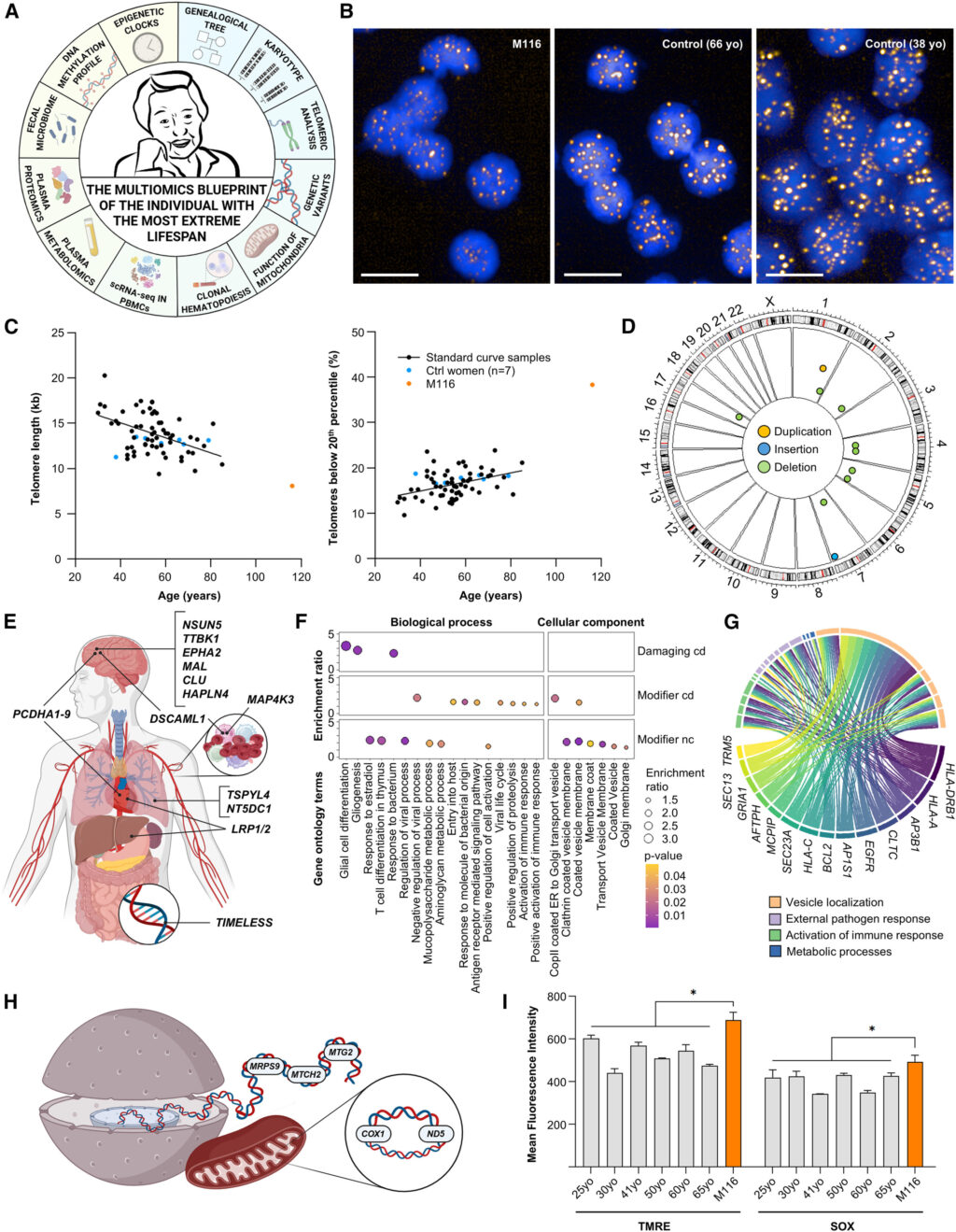
What is the secret of supercentenarians? While there is no magical “elixir of life” that allows us to live forever, this incredibly rare group of people who live to be 110 years or older appears to have some biological advantage. To identify the factors that underlie extreme longevity, scientists conducted a comprehensive study of Maria Branyas, who was the world’s oldest verified living person at the time of the study.
A new paper published in the journal Cell Reports Medicine details this biological check-up of the supercentenarian who was 117 when she died in August 2024. Researchers used a method called multiomics analysis to study her body’s systems, including her DNA, active genes, blood, saliva, stool, and gut bacteria. They also compared her results with those of younger people and other supercentenarians.
Unveiling the Secrets of Longevity
The key finding of this research is that extreme old age does not necessarily equate to poor health.
“Our findings illustrate how aging and disease can, under certain conditions, become decoupled, challenging the common perception that they are inextricably linked,”
wrote the researchers in their paper. Although Branyas had definite signs of aging, such as shortened telomeres (caps at the ends of chromosomes) and an aged population of a type of white blood cell called B lymphocytes, she didn’t have any major age-related diseases.
Researchers found that she had rare genetic variants that protected her from common age-related illnesses like heart disease and cancer. Additionally, inflammatory markers in her blood were low, meaning her body was not constantly dealing with low-grade inflammation, which is a known driver of age-related diseases.
The Role of Gut Health
Other important findings were that the bacteria in her gut resembled those of a much younger person. Evidence for this was the presence of a beneficial bacterium called Bifidobacterium, which is essential for gut health but typically declines in older individuals. Perhaps the most surprising result was that when researchers measured her biological age by reading the tiny chemical tags on her DNA, they found she was decades younger than her chronological age. This suggests her body was not aging as fast as it should have been.
Implications for the Future
What do the results mean for the rest of us? Since this study involved only one remarkable individual, it is probably too great a leap to generalize the findings. However, the research suggests that extreme old age does not automatically mean poor health. These insights could aid in the development of new therapies that target specific genes and metabolic pathways, as well as lifestyle and dietary modifications that can help mitigate age-related decline.
Expert Opinions and Future Research
According to experts, while the study provides fascinating insights, it is crucial to approach the findings with caution. Dr. Louise Aronson, a geriatrician and author, notes that
“studying individuals like Maria Branyas can offer valuable clues, but we must remember that longevity is influenced by a complex interplay of genetics, environment, and lifestyle.”
Future research could expand on these findings by examining larger populations of supercentenarians to better understand the genetic and environmental factors at play.
Historical Context and Comparisons
The pursuit of longevity has long been a subject of human fascination, from the mythical “Fountain of Youth” to modern-day scientific endeavors. Historically, societies have sought various means to extend life, often focusing on diet, exercise, and medical advancements. This study of Maria Branyas adds a new dimension to our understanding by highlighting the potential role of genetics and gut microbiota in achieving a long and healthy life.
Meanwhile, as the global population ages, the demand for insights into healthy aging becomes increasingly urgent. The findings from Branyas’s study could inspire new approaches to healthcare and wellness, emphasizing personalized medicine and preventative care.
The move represents a significant step forward in the quest to unlock the secrets of longevity. As researchers continue to explore the biological underpinnings of aging, the hope is that these discoveries will lead to practical applications that benefit people worldwide.
In conclusion, while the study of Maria Branyas provides a glimpse into the potential keys to a long life, it also underscores the complexity of aging and the need for continued research. The insights gained from this remarkable individual may one day pave the way for breakthroughs in how we understand and approach aging, ultimately improving the quality of life for future generations.






